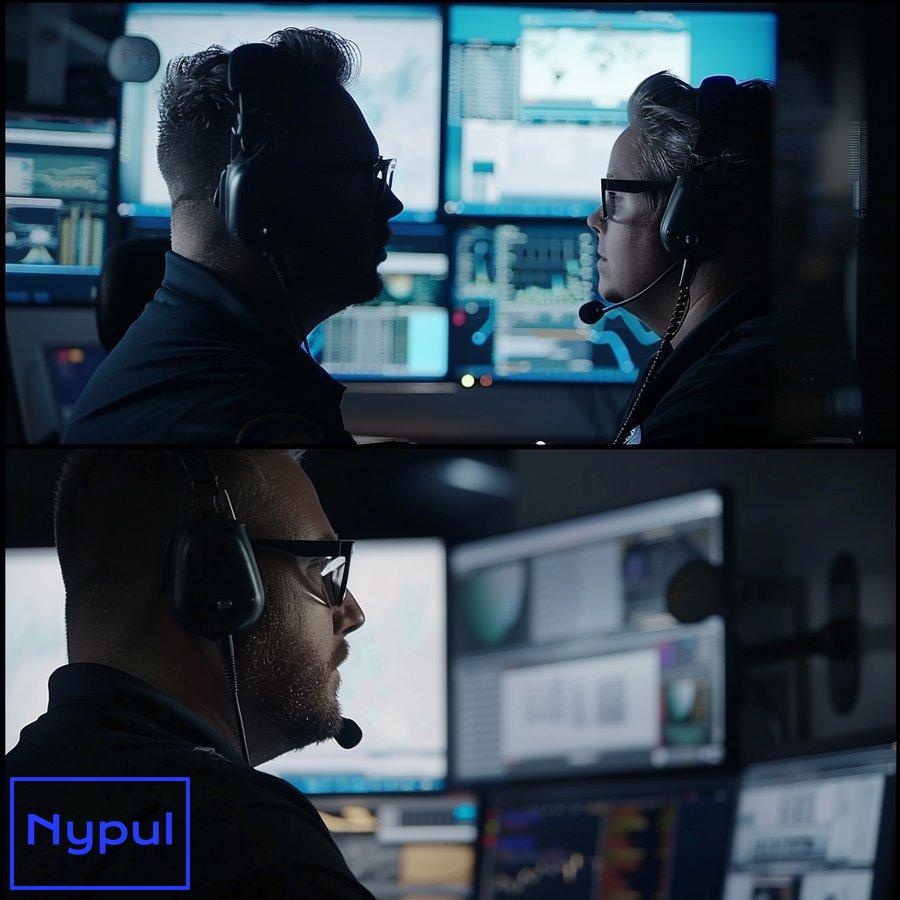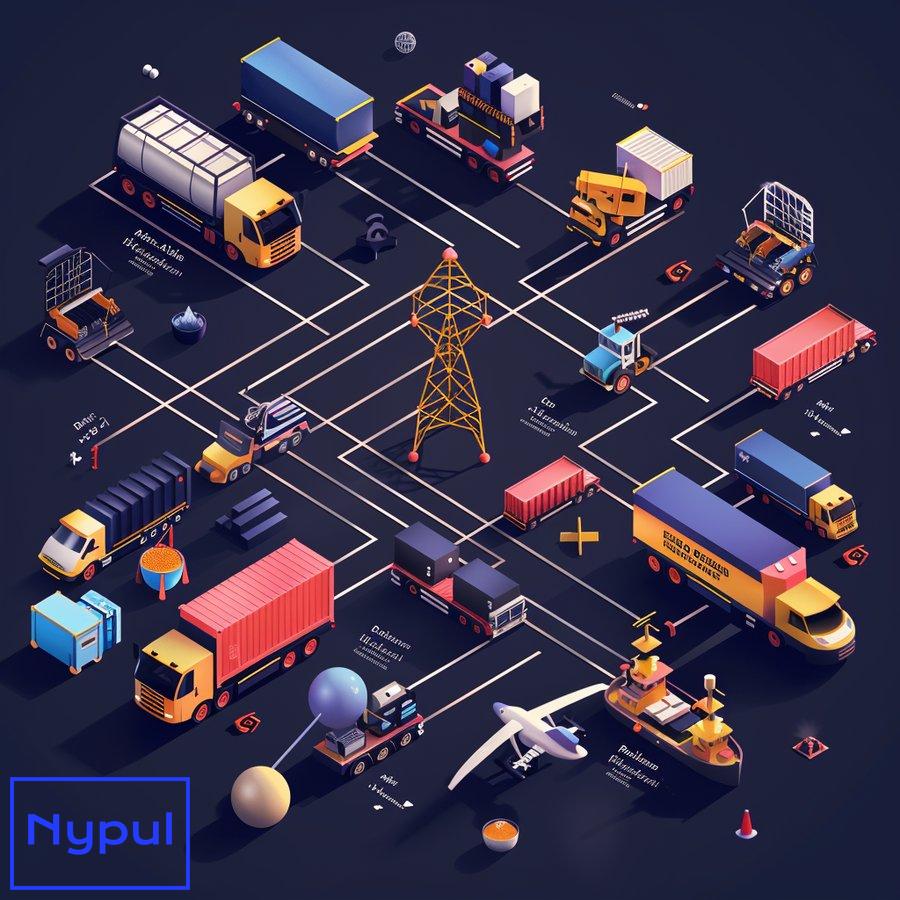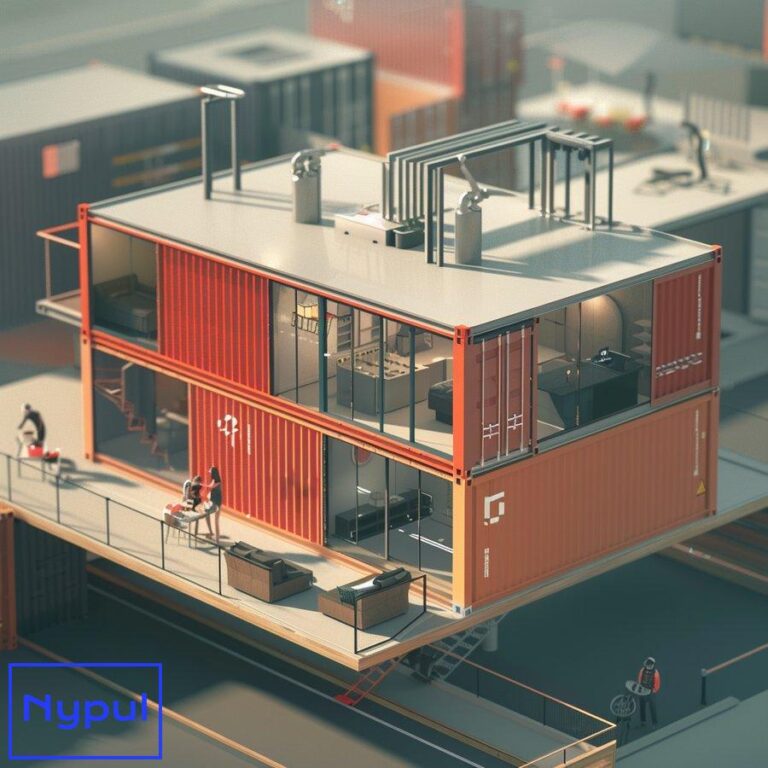What Is a Drayage Dispatcher Job Description
What does a drayage dispatcher do?
A drayage dispatcher plays a crucial role in coordinating the movement of shipping containers between ports, rail yards, and final destinations. These logistics professionals are responsible for efficiently managing the short-distance transportation of freight, typically within a single metropolitan area.
Drayage dispatchers serve as the central point of contact between drivers, customers, port authorities, and other stakeholders in the supply chain. They orchestrate the pickup and delivery of containers, ensuring timely and cost-effective transportation while adhering to regulations and customer requirements.
The primary functions of a drayage dispatcher include:
Schedule management
Drayage dispatchers create and maintain detailed schedules for container pickups and deliveries. They assign drivers to specific routes and loads, optimizing efficiency and minimizing empty miles.
Communication hub
Acting as a liaison between various parties, dispatchers relay critical information about shipment status, delays, and special instructions. They maintain constant contact with drivers, customers, and port personnel to address issues promptly.
Problem-solving
When unexpected challenges arise, such as traffic delays, equipment breakdowns, or port congestion, drayage dispatchers must quickly devise alternative solutions to keep freight moving.
Compliance oversight
Dispatchers ensure all operations comply with local, state, and federal regulations, including hours of service rules for drivers and proper documentation for customs clearance.
Resource allocation
Efficiently assigning available drivers, trucks, and chassis to meet demand while balancing costs and customer needs is a key responsibility of drayage dispatchers.
Data management
Accurate record-keeping of shipments, driver logs, and equipment usage is essential. Dispatchers often use specialized software to track and report on key performance indicators.
The role of a drayage dispatcher requires a unique blend of logistical expertise, interpersonal skills, and technological proficiency. By effectively coordinating the movement of containers between various transportation modes, drayage dispatchers play a vital part in keeping global supply chains running smoothly.
What are the key responsibilities of a drayage dispatcher?
Drayage dispatchers shoulder a wide range of responsibilities crucial to the seamless operation of intermodal freight transportation. Their duties encompass various aspects of logistics management, customer service, and regulatory compliance. Here are the key responsibilities that define the role of a drayage dispatcher:
Route planning and optimization
Drayage dispatchers meticulously plan and optimize routes for drivers to ensure efficient container movement. This involves considering factors such as traffic patterns, port congestion, and delivery windows to minimize transit times and fuel consumption.

Driver assignment and management
Dispatchers allocate drivers to specific loads based on their availability, qualifications, and hours of service regulations. They must balance driver preferences with operational needs to maintain a productive and satisfied workforce.
Real-time tracking and updates
Monitoring the status of shipments in real-time is a critical responsibility. Dispatchers use tracking systems to keep tabs on container locations and provide timely updates to customers and internal stakeholders.
Customer communication
Maintaining clear and consistent communication with customers is essential. Dispatchers inform clients about pickup and delivery times, address inquiries, and manage expectations regarding potential delays or issues.
Equipment coordination
Ensuring the availability and proper allocation of chassis, containers, and trucks is a key task. Dispatchers must track equipment locations and coordinate their movement to meet operational demands.
Documentation management
Accurate and timely processing of shipping documents, including bills of lading, customs forms, and delivery receipts, falls under the dispatcher’s purview. They must ensure all necessary paperwork is complete and compliant with regulations.
Problem resolution
When issues arise, such as port delays, equipment malfunctions, or scheduling conflicts, dispatchers must swiftly implement solutions to minimize disruptions to the supply chain.
Compliance monitoring
Dispatchers are responsible for ensuring all operations adhere to relevant regulations, including Department of Transportation rules, port authority guidelines, and customs requirements.
Performance tracking and reporting
Collecting and analyzing data on key performance indicators, such as on-time delivery rates, driver productivity, and fuel efficiency, helps dispatchers identify areas for improvement and report on operational effectiveness.
Cost management
Balancing operational efficiency with cost considerations is an ongoing responsibility. Dispatchers must make decisions that optimize resource utilization while keeping expenses in check.
Safety oversight
Ensuring driver and cargo safety is paramount. Dispatchers must consider weather conditions, road hazards, and driver fatigue when making assignments and route decisions.
Intermodal coordination
Facilitating smooth transitions between different modes of transportation, such as from ship to truck or rail to truck, requires careful planning and communication with various transportation partners.
Technology utilization
Leveraging dispatch software, GPS tracking systems, and communication tools effectively is crucial for modern drayage dispatchers to manage operations efficiently.
Capacity planning
Anticipating future demand and aligning resources accordingly helps dispatchers maintain optimal fleet utilization and meet customer needs.
Continuous improvement
Identifying opportunities to enhance processes, reduce costs, and improve service quality is an ongoing responsibility that contributes to the company’s competitive edge.
By effectively managing these diverse responsibilities, drayage dispatchers play a pivotal role in ensuring the smooth flow of goods through the intermodal transportation network. Their ability to juggle multiple tasks, make quick decisions, and maintain clear communication channels is essential to the success of drayage operations.
What skills and qualifications are required for the role?
The role of a drayage dispatcher demands a unique set of skills and qualifications to effectively manage the complexities of intermodal freight transportation. Successful candidates typically possess a combination of technical knowledge, interpersonal abilities, and industry-specific expertise. Here’s a comprehensive overview of the essential skills and qualifications required for this critical position:

Educational background
A high school diploma is typically the minimum educational requirement for entry-level drayage dispatcher positions. However, many employers prefer candidates with associate’s or bachelor’s degrees in logistics, supply chain management, or related fields. Relevant coursework in transportation management, business administration, or international trade can provide a solid foundation for the role.
Industry knowledge
A deep understanding of the drayage industry, including familiarity with port operations, intermodal transportation systems, and customs procedures, is crucial. Knowledge of industry terminology, regulations, and best practices is essential for effective communication and decision-making.
Technical skills
Proficiency in using transportation management systems (TMS), dispatch software, and other logistics-specific tools is required. Familiarity with GPS tracking systems, electronic logging devices (ELDs), and basic data analysis tools is also valuable.
Communication skills
Excellent verbal and written communication abilities are paramount. Dispatchers must effectively convey information to drivers, customers, port personnel, and other stakeholders, often in high-pressure situations.
Problem-solving abilities
The ability to think critically and devise creative solutions to logistical challenges is essential. Dispatchers must be able to quickly assess situations and make informed decisions to keep operations running smoothly.
Multitasking capabilities
Managing multiple shipments, drivers, and customer requests simultaneously requires strong organizational skills and the ability to prioritize tasks effectively.
Attention to detail
Accuracy in record-keeping, data entry, and documentation management is crucial to ensure compliance and maintain operational efficiency.
Customer service orientation
A strong focus on customer satisfaction and the ability to handle client inquiries professionally is vital for building and maintaining positive relationships.
Stress management
The fast-paced nature of drayage operations can be demanding. Dispatchers must remain calm under pressure and make sound decisions in high-stress situations.
Adaptability
The ability to quickly adjust to changing circumstances, such as weather events, port closures, or equipment failures, is essential for success in this role.
Time management
Efficiently managing schedules and meeting tight deadlines is a core requirement for drayage dispatchers.
Leadership skills
While not always a managerial role, dispatchers often need to guide and direct drivers, making leadership abilities valuable.
Analytical thinking
The capacity to analyze data, identify trends, and make data-driven decisions helps optimize operations and improve efficiency.
Regulatory compliance knowledge
Familiarity with DOT regulations, hours of service rules, and international shipping requirements is crucial for ensuring legal and safe operations.
Language skills
In diverse port environments, proficiency in multiple languages can be a significant asset, particularly in regions with international trade focus.
Physical requirements
While primarily an office-based role, some positions may require occasional visits to port facilities or warehouses, necessitating the ability to navigate industrial environments safely.
Certifications
While not always mandatory, certifications such as the Certified in Transportation and Logistics (CTL) or Certified Supply Chain Professional (CSCP) can enhance a candidate’s qualifications and demonstrate commitment to the field.
Experience
Many employers prefer candidates with prior experience in logistics, transportation, or customer service roles. Entry-level positions may require 1-2 years of relevant experience, while senior dispatcher roles often demand 5+ years in the industry.
The following table summarizes the key skills and qualifications for drayage dispatchers:
| Category | Essential Skills and Qualifications |
|---|---|
| Education | High school diploma (minimum), Associate’s or Bachelor’s degree (preferred) |
| Technical Proficiency | TMS, dispatch software, GPS systems, data analysis tools |
| Soft Skills | Communication, problem-solving, multitasking, customer service |
| Industry Knowledge | Drayage operations, intermodal systems, customs procedures |
| Regulatory Awareness | DOT regulations, hours of service rules, international shipping laws |
| Experience | 1-2 years for entry-level, 5+ years for senior positions |
| Optional Enhancements | Multiple language proficiency, industry certifications |
By possessing this combination of skills and qualifications, drayage dispatchers are well-equipped to navigate the challenges of intermodal freight coordination and contribute significantly to the efficiency of supply chain operations.
What does a typical day look like for a drayage dispatcher?
A typical day in the life of a drayage dispatcher is characterized by a dynamic blend of planned activities and spontaneous problem-solving. The role requires constant vigilance, adaptability, and efficient multitasking to ensure the smooth flow of container movements. Here’s a detailed look at what a drayage dispatcher might experience during a typical workday:
Early morning (5:00 AM – 7:00 AM)
Review overnight updates
The day often begins before sunrise, with dispatchers reviewing any updates or issues that occurred overnight. This includes checking emails, voicemails, and system alerts for any immediate concerns that need addressing.
Plan daily operations
Dispatchers assess the day’s scheduled pickups and deliveries, making any necessary adjustments based on new information or changes in driver availability.
Morning rush (7:00 AM – 10:00 AM)
Driver check-ins
As drivers begin their shifts, dispatchers confirm their status, provide route information, and address any questions or concerns.
Port coordination
Communication with port authorities begins, checking on container availability, potential congestion issues, or changes in operating hours that might affect pickups or deliveries.
Customer updates
Dispatchers start reaching out to customers with estimated pickup and delivery times, addressing any special instructions or last-minute changes.
Mid-morning to early afternoon (10:00 AM – 2:00 PM)
Real-time tracking
Continuous monitoring of driver locations and shipment statuses occurs throughout the day, with dispatchers making adjustments as needed to optimize routes and meet delivery windows.
Problem resolution
This period often sees the most intense problem-solving activity, as issues like traffic delays, equipment breakdowns, or customer changes require immediate attention and creative solutions.
Documentation management
Dispatchers process and verify shipping documents, ensuring all necessary paperwork is complete and accurate for customs clearance and delivery acceptance.
Afternoon (2:00 PM – 5:00 PM)
Performance analysis
Time is allocated to review key performance indicators, such as on-time delivery rates and fuel efficiency, to identify areas for improvement.
Planning for next day
Preliminary scheduling for the following day begins, taking into account upcoming shipments, driver availability, and equipment positioning.
Customer service
Dispatchers handle customer inquiries, provide shipment updates, and address any concerns or special requests.
Late afternoon to evening (5:00 PM – 8:00 PM)
Shift handover
For operations that run extended hours, dispatchers prepare detailed handover notes for the next shift, ensuring continuity in shipment management.
Final driver check-ins
As drivers complete their routes, dispatchers confirm successful deliveries, address any outstanding issues, and collect feedback on the day’s operations.
End-of-day reporting
Compilation of daily performance reports, including completed moves, any incidents or delays, and key metrics for management review.
Throughout the day, drayage dispatchers must remain flexible and responsive to changing conditions. They might encounter situations such as:
Unexpected port closures
Requiring rapid rerouting of drivers and communication with affected customers.
Customs delays
Necessitating coordination with brokers and adjusting delivery schedules accordingly.
Weather-related challenges
Adapting routes and schedules to ensure driver safety and minimize disruptions.
Equipment shortages
Creatively reallocating resources to meet the most critical shipment needs.
The following table illustrates the distribution of a drayage dispatcher’s time across various activities during a typical day:
| Time of Day | Primary Activities | Percentage of Time |
|---|---|---|
| Early Morning | Planning and review | 15% |
| Morning Rush | Coordination and updates | 25% |
| Midday | Problem-solving and tracking | 30% |
| Afternoon | Analysis and future planning | 20% |
| Evening | Reporting and handover | 10% |
This breakdown demonstrates the diverse nature of a drayage dispatcher’s responsibilities and the need for efficient time management throughout the day.
The role of a drayage dispatcher requires a unique combination of proactive planning and reactive problem-solving. By effectively managing these varied tasks and maintaining clear communication channels with all stakeholders, dispatchers play a crucial role in ensuring the efficiency and reliability of intermodal freight transportation.
What tools and technologies do drayage dispatchers use?
Drayage dispatchers rely on a suite of advanced tools and technologies to efficiently manage the complex logistics of container movements. These digital solutions enhance visibility, streamline communication, and optimize decision-making processes. Here’s an in-depth look at the key tools and technologies employed by modern drayage dispatchers:
![]()
Transportation Management Systems (TMS)
At the core of a dispatcher’s toolkit is a robust TMS. These comprehensive platforms integrate various aspects of drayage operations, including:
Order management
TMS software allows dispatchers to input, track, and manage customer orders from inception to completion.
Route optimization
Advanced algorithms suggest the most efficient routes, considering factors like traffic, port congestion, and delivery windows.
Driver assignment
TMS helps match drivers with loads based on availability, qualifications, and hours of service regulations.
Real-time GPS tracking
Integration with GPS devices provides live updates on driver locations and estimated arrival times.
Electronic Logging Devices (ELDs)
ELDs automatically record driving time and ensure compliance with hours of service regulations. Dispatchers use this data to:
Monitor driver availability
Real-time insights into drivers’ remaining hours help in making informed assignment decisions.
Ensure compliance
Automated logging reduces the risk of violations and associated penalties.
Mobile communication apps
Specialized mobile applications facilitate seamless communication between dispatchers and drivers. These apps often include:
In-app messaging
Secure, instant communication for sharing route updates, special instructions, or addressing driver queries.
Document scanning
Drivers can quickly capture and transmit proof of delivery, bills of lading, or other critical documents.
Load acceptance
Drivers can review and accept assigned loads directly through the app.
Port community systems
These platforms connect various stakeholders in port operations, providing dispatchers with:
Container availability updates
Real-time information on when containers are ready for pickup.
Appointment scheduling
The ability to book specific time slots for container pickup or delivery at terminals.
Customs status tracking
Updates on clearance progress to anticipate and manage potential delays.
Predictive analytics tools
Advanced analytics software helps dispatchers make data-driven decisions by:
Forecasting demand
Identifying patterns in shipping volumes to anticipate resource needs.
Optimizing asset utilization
Suggesting strategies to minimize empty miles and maximize equipment usage.
Identifying bottlenecks
Highlighting recurring issues in the supply chain for process improvement.
Customer relationship management (CRM) systems
CRM software helps dispatchers manage customer interactions and preferences:
Contact management
Centralized storage of customer information and communication history.
Service level tracking
Monitoring performance against customer-specific service agreements.
Automated notifications
Sending timely updates to customers about shipment status or potential delays.
Weather and traffic monitoring systems
Real-time data on road conditions and weather patterns allows dispatchers to:
Anticipate delays
Proactively adjust routes or schedules based on forecasted conditions.
Ensure safety
Reroute drivers away from hazardous weather or road closures.
Chassis management platforms
These specialized tools help track and allocate chassis equipment:
Inventory tracking
Real-time visibility into available chassis at various## What tools and technologies do drayage dispatchers use? (continued)
Chassis management platforms
These specialized tools help track and allocate chassis equipment:
Inventory tracking
Real-time visibility into available chassis at various locations reduces the risk of equipment shortages and ensures that drivers have the necessary chassis when picking up containers.
Allocation efficiency
Through advanced algorithms, these platforms can optimize chassis assignments based on location, availability, and upcoming loads.
Maintenance tracking
Dispatchers can also monitor the maintenance schedules of chassis to ensure they are in good working condition, thus reducing the chances of unexpected breakdowns.
Data integration
Many chassis management systems integrate with TMS, allowing for streamlined operations and better communication regarding chassis availability.
Regulatory compliance tools
Tools that help ensure compliance with local, state, and federal regulations include:
Automated documentation systems
These systems assist in generating and verifying necessary documentation for customs, safety inspections, and other regulatory requirements, which can save time and reduce errors.
Compliance dashboards
Real-time dashboards provide visibility into compliance metrics, hours of service for drivers, and vehicle maintenance records.
Training and support resources
Many software platforms offer training modules and customer support to help dispatchers stay updated on compliance standards.
The integration of technology in drayage dispatching has revolutionized the way logistics operations are managed, enhancing efficiency, reducing costs, and improving customer satisfaction. With the right tools at their disposal, drayage dispatchers can effectively oversee complex operations, ensuring that goods move smoothly throughout the supply chain. Technology continues to evolve, providing new solutions that further streamline operations and improve decision-making capabilities.
What challenges do drayage dispatchers face?

Drayage dispatchers encounter a variety of challenges that can impact the efficiency of freight transportation. These challenges require quick thinking, adaptability, and effective problem-solving skills. Here are some of the most common challenges faced by drayage dispatchers:
Port congestion
Heavy traffic at ports can lead to significant delays in container pickups and deliveries. Dispatchers must navigate these congestion issues by adjusting schedules or rerouting drivers to minimize downtime.
Equipment shortages
A lack of available trucks or chassis can hinder operations. Dispatchers must proactively manage inventory levels and coordinate with equipment providers to ensure that drivers have access to the necessary resources.
Regulatory compliance
Navigating complex local, state, and federal regulations is an ongoing challenge. Dispatchers must stay informed about changes in laws governing transportation and ensure all operations adhere to these regulations to avoid penalties.
Driver availability
Managing driver schedules while complying with hours of service regulations can be challenging. Dispatchers must balance driver preferences with operational needs while ensuring that all shifts are adequately staffed.
Customer expectations
Meeting customer demands for timely deliveries while managing operational constraints can be difficult. Dispatchers must communicate effectively with customers about potential delays or changes in service while maintaining high levels of satisfaction.
Weather-related disruptions
Adverse weather conditions can impact transportation routes and schedules. Dispatchers need to monitor weather forecasts closely and adjust plans accordingly to ensure driver safety and minimize service disruptions.
Technological challenges
While technology enhances efficiency, it also poses challenges such as system outages or difficulties in integrating new software solutions. Dispatchers must be adaptable and ready to troubleshoot any technical issues that arise.
Communication breakdowns
Effective communication among drivers, customers, port authorities, and other stakeholders is crucial for smooth operations. Miscommunication or lack of timely updates can lead to confusion and delays.
Cost management
Balancing operational efficiency with cost control is a constant challenge. Dispatchers must make strategic decisions that optimize resource utilization while keeping expenses within budget constraints.
The following table summarizes some of the primary challenges faced by drayage dispatchers:
| Challenge | Description |
|---|---|
| Port congestion | Heavy traffic leading to delays in container movement |
| Equipment shortages | Insufficient trucks or chassis impacting operations |
| Regulatory compliance | Navigating complex transportation laws |
| Driver availability | Balancing driver schedules with operational needs |
| Customer expectations | Meeting demands for timely deliveries |
| Weather-related disruptions | Adverse conditions affecting routes |
| Technological challenges | Issues with system integration or outages |
| Communication breakdowns | Miscommunication leading to confusion |
| Cost management | Balancing efficiency with budget constraints |
By understanding these challenges, drayage dispatchers can develop strategies to mitigate their impact on operations. Proactive planning, effective communication, and leveraging technology are essential components in overcoming these obstacles.
What career advancement opportunities exist for drayage dispatchers?
Career advancement opportunities for drayage dispatchers are abundant within the logistics industry. As professionals gain experience and develop their skills, they can pursue various paths that lead to higher positions or specialized roles. Here are some common career advancement opportunities available for drayage dispatchers:
Senior dispatcher roles
With several years of experience, drayage dispatchers can advance to senior dispatcher positions. In this role, they may oversee a team of junior dispatchers, manage larger accounts, or handle more complex logistics operations.
Operations manager
Dispatchers who demonstrate strong leadership skills may transition into operations management roles. Operations managers oversee entire logistics processes within a company or department, focusing on optimizing efficiency and improving service quality.
Logistics coordinator
This role involves coordinating all aspects of logistics operations beyond just drayage. Logistics coordinators work with various transportation modes (e.g., rail, air) and manage broader supply chain activities.
Supply chain manager
Experienced dispatchers may move into supply chain management positions where they oversee end-to-end supply chain processes. This role requires strategic thinking and collaboration across multiple departments within an organization.
Fleet manager
Dispatchers interested in fleet operations may transition into fleet management roles. Fleet managers are responsible for overseeing vehicle maintenance, driver performance, compliance with regulations, and optimizing fleet utilization.
Customer service manager
For those who excel in customer relations, a shift toward customer service management could be a viable path. This role involves ensuring high levels of customer satisfaction while managing service delivery teams.
Training and development specialist
Dispatchers with strong communication skills may choose to focus on training new hires or developing training programs for existing staff within their organization.
Consultant roles
Experienced professionals may opt to become consultants in logistics or supply chain management. This path allows them to leverage their expertise to advise companies on best practices or process improvements.
The following table outlines potential career advancement paths for drayage dispatchers:
| Career Advancement Opportunity | Description |
|---|---|
| Senior dispatcher | Oversee junior dispatchers; manage larger accounts |
| Operations manager | Oversee entire logistics processes; optimize efficiency |
| Logistics coordinator | Manage broader supply chain activities across modes |
| Supply chain manager | Oversee end-to-end supply chain processes |
| Fleet manager | Manage vehicle maintenance; optimize fleet utilization |
| Customer service manager | Ensure high levels of customer satisfaction |
| Training specialist | Develop training programs; train new hires |
| Consultant roles | Advise companies on logistics best practices |
As the logistics industry continues to evolve with technological advancements and increasing demand for efficient supply chains, the opportunities for career growth remain promising for dedicated drayage dispatchers. Continuous learning through professional development courses or certifications can further enhance prospects for advancement within this dynamic field.



